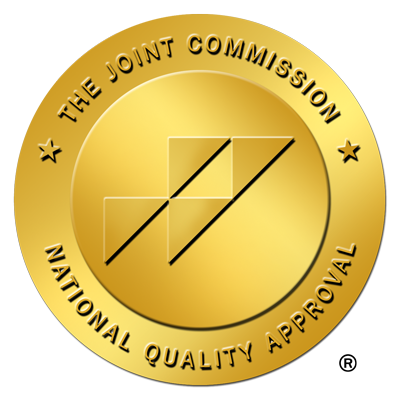When your teen receives a diagnosis for a mental health issue, it’s not always clear what course of action to take: do they need daily teen outpatient treatment, inpatient treatment, or another level of care somewhere in between that’s more appropriate for their specific mental health issue?
This is an important question for parents or caregivers to answer, because it has a significant impact on the overall treatment outcome.
Note: When we say phrases like outpatient treatment and inpatient treatment, we’re referring to specific levels of care.
Here are the things you need to know, as the parent of a teen with a mental health issue, about levels of care:
- Level of care refers to the degree of immersion, intensity, frequency, and duration (time) in treatment each week.
- In general, there are three levels of care:
- Outpatient: teens live at home and participate in treatment at a treatment facility during the day on weekdays
- Residential: teens live at the treatment facility and participate in treatment every day, including some evening and weekend hours
- Hospitalization: teens in crisis stay overnight in the psychiatric wing of a hospital, or at a specialized psychiatric hospital, until they’re safe, stable, and approved for release to residential or outpatient treatment by a specialist in adolescent psychiatry
- Clinicians determine the appropriate level of care based on several factors, including, but not limited to:
- Degree of acuity: how severe and disruptive symptoms are during assessment
- Degree of disruption: how much symptoms impair or prevent participation in basic daily activities
- Treatment history: the level of care and type of treatment the teen participated in previously
We oversimplified something, though. There are three levels of outpatient treatment: general outpatient treatment (OP), intensive outpatient programs (IOP), and partial hospitalization programs (PHP).
We’ll discuss those levels now.
Why Does Daily Teen Outpatient Treatment Help Teens?
General outpatient treatment is what most people think of when they hear the word therapy. A teen with mental health issues may receive a clinical diagnosis and a referral for outpatient treatment with a therapist or counselor once or twice a week.
This type of outpatient treatment helps teens with mild symptoms that are uncomfortable, confusing, or distressing, but don’t prevent them from participating in the basic activities of daily life. Mild symptoms, in most cases, won’t prevent a teen from going to school, participating in hobbies, or engaging in social activities – but they may make them difficult.
This brings up a topic we mention above but need to clarify before we discuss intensive outpatient (IOP) partial hospitalization (PHP) programs – level of acuity. Acuity refers to how severe or disruptive symptoms are right now. In most cases, clinicians designate one of three levels of acuity when making a diagnosis: mild, moderate, and severe
We’ll explain those levels of acuity now:
Mild.
We discuss this level above. Teens with mild symptoms, in most cases, can participate in school and other typical daily activities. Teens with mild symptoms will most likely participate in outpatient treatment once a week, or twice a week at most.
Moderate.
Moderate symptoms cause more disruption than mild symptoms and can – but not always – prevent a teen from full participation in school, extracurricular activities, or social activities. A teen with moderate symptoms that cause moderate disruption will most likely receive a referral for an intensive outpatient program (IOP). A teen with moderate symptoms that cause significant disruption will most likely receive a diagnosis for a partial hospitalization program (PHP).
Severe.
Severe symptoms cause significant disruption in all areas of life. A teen with severe symptoms may not be able to participate in family life, school, or social life. Their symptoms may be so severe they prevent them from attending to the basics of personal hygiene or engaging in healthy interactions with family members. In most cases, teens with severe symptoms require immersive care and won’t receive a referral for outpatient treatment.
To answer the question in the heading of this section, daily outpatient treatment helps teens develop the skills they need to manage the disruptive mental health symptoms that impair or prevent their ability to fully engage in common daily activities. Meeting with a therapist on a daily basis does three things:
- Helps create a productive treatment alliance with counselors and therapists.
- Helps teens build treatment momentum, consolidate gains, and make progress from day to day and week to week.
- Gives teens the time they need to develop the skills they need to manage their symptoms, find balance, and return to daily activities.
Before we shifted focus to talk about levels of acuity, we were ready to discuss the other two levels of outpatient treatment beyond general outpatient care: intensive outpatient programs (IOP) and partial hospitalization programs (PHP).
Daily Teen Outpatient Treatment for Mental Health Issues: Intensive Outpatient (IOP) and Partial Hospitalization Programs (PHP)
It’s important to understand that under the umbrella of outpatient care, there are significant differences in specific levels of care. We discuss general outpatient treatment above, which refers to treatment once or twice a week for teens with mild to moderate symptoms. In most cases, teens at this level of care are not in crisis and are fine going to school and living at home.
Now let’s discuss the next two levels of outpatient care: IOP and PHP programs.
Intensive Outpatient Programs (IOP)
Teens in PHP programs engage in treatment 3-5 days a week for 2-3 hours per day. At this level of care, teens have symptoms that are uncomfortable and disruptive, but don’t prevent them from going to school or living at home.
Benefits of Daily Teen Outpatient Treatment: The Value of IOP
Dailly contact with professional support.
As we mention above, increased treatment frequency helps teens consolidate gains, practice coping skills, and build treatment momentum.
Peer contact.
In most cases, teens participate in IOP treatment in a group setting with other teens. This helps on a variety of levels. Teens feel less alone, can practice coping skills with other teens, and give and receive feedback in ways that adults don’t.
Variety.
Teens in IOP programs may participate in several different therapeutic modes, such as in cognitive behavioral therapy (CBT), dialectical behavior therapy (DBT), expressive therapies like art and journaling, or activity-based, experiential therapies.
Education.
Teens in IOP programs typically attend workshops on mental health topics such as distress tolerance, anger management, health relationships, boundary setting, and the science of mental health and mental health treatment.
Practice.
Attending IOP on a daily basis allows teens to work on symptom management, stress tolerance, and relationship skills more frequently than teens in general outpatient care. This helps them apply their skills effectively at school during the day and at home when they return from treatment.
Family participation.
Many IOP programs offer separate classes and workshops for parents, siblings, and other family members. Evidence shows that when families engage in the treatment process, outcomes improve. In addition, family members and teens may engage in therapeutic sessions together, which is called family therapy.
Partial Hospitalization Programs (PHP)
Teens in IOP programs engage in treatment 5 days a week for 3-5 hours per day. At this level of care, teens have symptoms that are moderate to severe, cause significant disruption in all areas of life, prevent them from going to school, but don’t prevent them from living at home.
Benefits of Dailly Teen Outpatient Treatment: The Value of PHP
Dailly contact with professional support.
Daily treatment helps teens make progress form one day to the next, which improves their psychological and emotional coping skills and improve overall treatment outcomes.
Total focus on treatment.
Since teens in PHP treatment don’t go to school, they can focus one hundred percent on their mental health. Without the academic and social pressure associated with school – and with dedicated time every day to heal and grow – teens can make more progress, more quickly, than they can in less immersive treatment programs.
Peer contact.
Like IOP, teens participate in PHP treatment alongside other teens, with the same benefits of peer contact in IOP programs.
Variety.
Like IOP, teens in PHP programs will most likely engage in several therapeutic modes, such cognitive behavioral therapy (CBT) and dialectical behavior therapy (DBT). However, in PHP programs, teens often have more time to engage in expressive, complementary, or experiential modes of treatment.
Education.
Teens in PHP programs have more time for educational workshops than teens in IOP. With more time and added frequency, therapists and teens can explore topics in greater depth, which can increase knowledge and understanding and lead to improved treatment outcomes.
Practice.
In a PHP program, teens have more time to practice their symptom management and coping skills. This gives them more time for trial and error, more time to find out what works best for them, and more opportunities for direct feedback from therapists, counselors, and peers.
Family participation.
Like IOP treatment, most PHP programs offer separate classes and workshops for parents, siblings, and other family members. When families have a clear understanding of what their teen is experiencing and an in-person view of the treatment experience, they’re better able to support the teen on the road to recovery. And, like in IOP treatment, family members and teens often engage in therapeutic sessions together, which is called family therapy.
To summarize, daily outpatient treatment – either IOP or PHP – gives teens the time they need to learn, grow, and thrive in recovery. Teens in IOP can apply their new skills every day at school, as well as at home after treatment. Teen in PHP programs can apply their skills at home, after treatment. In both cases, the combination of immersive support and real-world application helps teens make significant treatment progress, and return to school or daily activities with a robust, durable, and practical set of psychological, emotional, and social coping skills.
How Many Teens are in Daily Teen Outpatient Treatment?
Millions.
We’re not exaggerating.
First, let’s look at one mental health issue: major depressive episode (MDE), which is a proxy metric for major depressive disorder (MDD). Here’s the latest prevalence data among teens 12-17, according to the 2022 National Survey on Drug Use and Health (2022 NSDUH):
- Major depressive episode (MDE) in the past year: 19.5% (4.8 million)
- MDE with severe impairment in past year: 14.6% (3.5 million)
Now let’s look at how many of those received professional treatment and support.
Any type of treatment:
- 56.8% of teens with MDE
- 62.3% of teens with MDE with severe impairment
Outpatient treatment (general, IOP, PHP):
- With MDE: 48.0% (2.3 million)
- MDE with severe impairment: 53.6% (1.9 million)
As you can see, over four million teens engaged in outpatient therapy in 2022. This tells you that something that may give you hope:
Neither you nor your teen are alone.
Hope is the cornerstone of treatment: when you and your teen know you’re in a high-quality program that offers the best treatment available, you can begin to see a brighter future ahead. With commitment and consistent, daily effort, your family can rediscover balance, and your teen can heal: we know, because we see real healing happen in families every day.
How to Find Support: Online Resources for Families
- The American Academy of Child and Adolescent Psychiatry (AACAP) maintains an easy-to-use therapist finder.
- The National Institute of Mental Health (NIMH) provides this find treatment page
- The Department of Health and Human Services (HHS) provides this find treatment page




